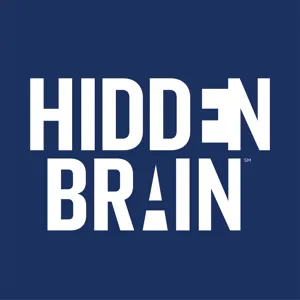Podcast Summary
The Power of Social Networks: Understanding the Spread of Viruses, Movements, and Information: Social networks play a critical role in how things spread, from viruses to information. Understanding how they work can help predict success or failure and harness social contagion to build a better world.
Social networks play a crucial role in the spread of viruses, social movements, and even information. The way people are connected to each other influences how things spread or fail to spread. In the case of a virus, it requires brief contact between individuals to transmit, like a glancing connection at an airport gate. The cascading effect of individuals infecting those they come in contact with leads to a rapid spread of the virus across the globe. Understanding how social networks function is key to predicting success or failure of a movement, company, or idea. Harnessing social contagion can be used to build a better world.
The Epidemiological Model: Understanding the Spread of Ideas and Social Changes: Highly connected people can trigger an epidemic of ideas, leading to exponential spread. Weak ties, like a chance encounter at an airport, can act as transmission points, ultimately leading to global influence.
The epidemiological model of disease spread has become a guiding metaphor for understanding the spread of all kinds of processes including ideas, innovations, and social changes. The intuition that highly connected people can be effective for spreading something to lots of other people, and therefore, set off an epidemic all by themselves, has led to the rise of viral and influencer marketing campaigns. The story of Oprah's first tweet endorsing Twitter is often cited as an example of how high profile influencers can produce exponential growth of a platform. Sociologists refer to connections like the glancing contact at an airport as weak ties, which can act as an important transmission point for information and ideas from one community to another, ultimately leading to their spread across the world.
How Weak Ties Play a Vital Role in Spreading Ideas and Opportunities: Casual contacts or weak ties can help in transmitting information effectively. The success of an idea depends on more than just its strength; it also relies on the engagement and receptivity of the community it targets.
Weak ties, or casual contacts, are highly effective for information transmission and can lead to the spread of new opportunities or ideas. However, not all ideas or movements spread like viruses, and some can take decades to catch on. The success of a movement or idea depends on more than just the strength of its messages; it also depends on the receptivity and engagement of the community it is trying to reach. Understanding why some movements succeed and others fail is an important question that requires further scientific exploration.
Beyond Rosa Parks: The Untold Stories of Women in the Civil Rights Movement: The success of social movements cannot be attributed to a single person or simple ideas. Recognizing and understanding the contributions of lesser-known figures is important in understanding the complex dynamics behind successful movements.
The story of the Civil Rights Movement has been simplified to a single person, Rosa Parks, being responsible for its success. However, the truth is that many women, including Claudette Colvin, stood up against racial segregation on public buses but didn't receive the same level of recognition. Sociologist Damon Centola argues that the conventional models of virality, where simple contagion spreads through familiar ideas or products, don't explain why some social movements take off while others stall. Complex contagions, which introduce unfamiliar or risky ideas, require more persuasion and activism to take hold. Therefore, it's important to recognize the lesser-known figures who contributed to social change and understand the complex dynamics behind successful movements.
The Power of Complex Contagions and Social Proof in Driving Behavior Change: People are more likely to adopt important behavioral changes when they see others around them doing the same, making social reinforcement crucial in driving complex contagions. Successful initiatives should focus on changing communities rather than individuals.
The spread of complex contagions, like important behavioral changes, is different from simple contagions like cat videos due to the personal costs involved. Complex contagions require social reinforcement from several people to convince individuals to adopt and create a lot of reinforcement for it. The central reason people change their behavior in any important way is because they see the people around them changing their behavior, known as social proof. The goal of driving complex contagions is to show individuals that the people around them are changing, rather than focusing on making the individual change. Understanding this can help drive effective social change initiatives.
The Power of Connections in Sustaining Membership and Triggering Behavioral Change: Having a network of supporters and adopters is essential in maintaining engagement and promoting the adoption of new behaviors. A fishing net network structure, with strong ties, is more effective than a fireworks display structure.
Having connections to existing adopters and people showing support for an idea helps sustain membership and keeps people engaged. A communication network with a group of people online can change people's likelihood of adopting a new behavior. A fishing net network structure, where people are connected in a closed loop, can trigger behavioral change more effectively than a fireworks display network structure. The fishing net network may spread information more slowly but adoption spreads much faster and farther. Reinforcement from multiple people who are connected to them more closely, a network of strong ties, is crucial for difficult behavioral change.
Complex Contagion and Social Change: The Role of Strong Ties and Clusters.: Creating social change through complex contagion requires strong relationships and the power of clusters in the network periphery. Influencers may not be as effective in sparking change without seeing their followers change first.
For complex contagion, strong ties are required for social change, as evidenced by the Civil Rights Movement. Influencers may not be effective in sparking this kind of change because they are hesitant to go first without seeing their fans changing first. Successful initiatives for social change - including novel technologies like Twitter and Facebook, as well as social movements like Black Lives Matter, Arab Spring, and the Civil Rights Movement - grew from clusters of people in the network periphery, not in the center.
The Power of Peripheral Growth and Strong Ties in Driving Innovation and Social Change: Innovations and social change often start from the periphery before spreading across networks. Businesses and individuals can leverage strong ties and peripheral growth dynamics to drive innovation and effect social change.
Social change and innovations often start at the periphery of networks, with strong ties and contagion leading to spatial growth within local neighborhoods before expanding to other cities and regions. Celebrity endorsers often join in once the innovation has gained momentum, rather than being the catalyst for its success. Twitter's origin story is an example of how social media can spread locally before exploding in growth through hyper-exponential expansion once it reaches a tipping point. Understanding the dynamics of peripheral growth and strong tie contagion can help businesses and individuals leverage networks to drive social change and innovation.
How Disconnected Networks Became Connected: The Rise of Black Lives Matter: Building networks and connections among different social groups can lead to social change. Regular citizens taking over the conversation on social media can bridge the gap and influence mainstream media. This requires effort and thick relationships.
Social change almost always originates in the periphery of the network. The rise of Black Lives Matter shows how disconnected networks became connected through regular citizens taking over the conversation on social media. By bridging the different social groups and developing thicker relationships, the movement gained momentum and was able to influence mainstream media. The tragic death of George Floyd was not the only catalyst for the movement, but rather a culmination of years of conversations and efforts. This highlights the importance of building networks and connections in order to effect social change.
The Power of Social Networks and Minority Mobilization in the Black Lives Matter Movement: The Black Lives Matter movement gained momentum through social media coordination and minority mobilization, proving that effective and lasting change can be achieved through social networks and committed groups on the periphery.
The Black Lives Matter movement gained momentum through coordinated efforts on social media after the death of Michael Brown in Ferguson, Missouri. Rather than isolated incidents, deaths like Sandra Bland and Tamir Rice were unified under a core message, prompting a national conversation. The movement's success was not solely due to virality or celebrity influence, but rather the mobilization of committed minority groups on the periphery and the use of social networks to create change. Sociologist Damon Centola offers a roadmap for change agents to deploy social networks for effective and lasting change.
The Power of Committed Minorities in Provoking Social Change: Committed minorities can bring about significant social change when they reach a certain threshold of around 25% of the population. Organic change can occur by focusing persuasion efforts on smaller groups, and government incentives alone are insufficient in generating a tipping point.
Committed minorities can have a significant impact on social change when they reach a certain threshold, usually around 25% of the population. This explains why social change can be abrupt, with a hidden process that most people are not aware of. Concentrating persuasion efforts on a small number of villages or houses can lead to the organic spread of change through social networks. Government incentives and availability are not enough to generate a tipping point or change in norms without the influence of committed minorities.
The Power of Social Norms in Encouraging Adoption of Solar Panels: Encouraging renewable energy through targeting communities and social incentives has proven successful, but attention must be paid to potential negative consequences and their implications for society as a whole.
Targeting neighborhoods and incentivizing homeowners to install solar panels within certain communities can shift social norms and create a social pressure that leads to the voluntary adoption of solar panels. This approach has been successful in countries like Germany, Britain, Japan, California, and Connecticut. However, some authoritarian governments, like China's 50 Cent Party, have used similar tactics to suppress dissent on social media by flooding the discussions with irrelevant information that changes people's expectations of what they can and can't talk about. This highlights the need to not only understand the mechanics of social change processes but also their implications for governments and society as a whole. The power of social networks is not just information delivery pipes but also drivers of social norms and expectations.
The Power of Creating Egalitarian Social Networks for Productive Interactions: Creating networks with diverse perspectives leads to more productive interactions and finding common ground for social problems, as demonstrated in highly polarized groups. Social networks shape our beliefs through interactions.
Social networks act as prisms that shape our beliefs through the people we interact with, and these interactions can be structured to be more productive by creating networks that are more egalitarian. By doing so, good ideas from the periphery can gain traction and be reinforced, resulting in a reconciliation of ideas and a move towards each other. This is unbelievably effective for changing the actual beliefs of people in a community, as demonstrated in similar groups of highly polarized Democrats and Republicans. Thus, creating networks that allow for diverse perspectives can lead to more productive interactions and a greater likelihood of finding common ground for social problems.





